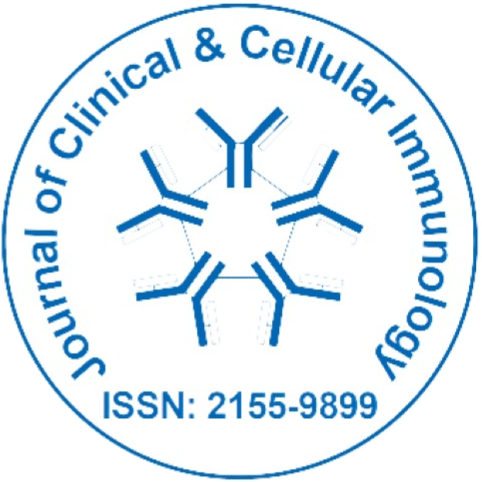
Journal of Clinical and Cellular Immunology
Open Access
ISSN: 2155-9899

ISSN: 2155-9899
Isatou Bah, Dima Youssef, Mary E. Howell, Zhi Q. Yao, Charles E. McCall, Mohamed El Gazzar1*
Expansion and accumulation of Myeloid-Derived Suppressor Cells (MDSCs) during sepsis contribute to post-sepsis immunosuppression, as these cells suppress innate and adaptive immunity. We have shown that the proinflammatory S100A9 protein accumulates in the nucleus of MDSCs during late sepsis in both mice and humans. In this context, nuclear S100A9 acts as a transcription co-factor to induce the expression of two potent immunosuppressive cytokines, Interleukin-10 (IL-10) and Transforming Growth Factor-β (TGF-β). S100A9 knockdown in MDSCs from late septic mice and late septic patients significantly reduced IL-10 and TGF-β production upon ex vivo stimulation with bacterial lipopolysaccharide. In contrast, ectopic expression of S100A9 in MDSCs from S100A9-deficient mice significantly increased IL-10 and TGF-β production. Chromatin immunoprecipitation revealed that S100A9 protein binds at the IL-10 and TGF-β promoters. Moreover, co-transfection of S100A9 expression plasmid with a luciferase reporter gene under the control of IL-10 or TGF-β promoter induced the luciferase gene expression in MDSCs from S100A9-deficient mice. Notably, in vivo depletion of long noncoding Ribonucleic Acid (RNA) Hotairm1, which induces S100A9 protein accumulation in MDSCs during late sepsis, reduced IL-10 and TGF-β production ex vivo. Since IL-10 and TGF-β enhance sepsis immunosuppression and are associated with worse outcomes, our findings suggest that targeting S100A9 may mitigate the immunosuppressive effects of MDSCs in late sepsis.
Published Date: 2025-02-11; Received Date: 2025-01-11